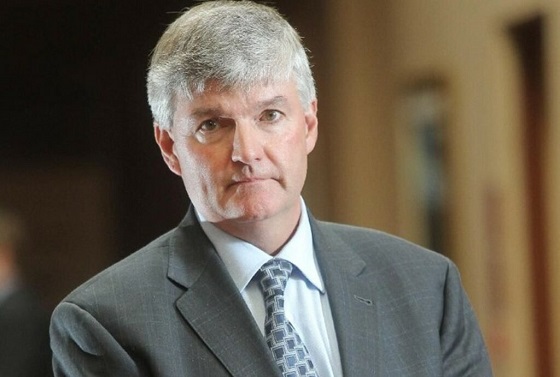Alberta
Watch: Province advising all large gatherings (over 250 people) in Alberta to cancel until further notice

Update on COVID-19 in Alberta
Alberta is adopting aggressive new public health measures to help limit the spread of the novel coronavirus, officially known as COVID-19.
Effective immediately, the Alberta government is asking all large gatherings or international events in the province to be cancelled and advising Albertans against travel outside of the country.
Four new cases of COVID-19 have now been confirmed in Alberta, bringing the total number in the province to 23, all travel-related. One patient continues to recover in hospital, while all others are in isolation at home.
“We are doing everything possible to limit the spread of COVID-19 in our province. The virus is spreading rapidly and is now a global threat. We are implementing these new measures to slow its spread and limit the risks in the weeks ahead. Protecting the health of Albertans is, and always will be, our top priority.”
“The coming weeks are vital in our fight to protect Alberta from COVID-19. These are serious steps, and ones we do not take lightly. I am calling on every Albertan and organization to assist our public health efforts and do their very best to comply with the public health guidance. It is critical that Albertans come together to do our part in keeping Albertans healthy and safe.”
New public health restrictions
Alberta is asking organizers to cancel any events that have more than 250 attendees. This includes large sporting events, conferences and community events. It does not extend to places of worship, grocery stores, airports or shopping centres.
Any event that has more than 50 attendees and expects to have international participants, or involves critical infrastructure staff, seniors, or other high-risk populations should also be cancelled.
Events that do not meet these criteria can proceed, but risk mitigation must be in place, such as sanitizer stations and distancing between attendees.
At this time, schools and daycares can remain open but steps should be taken to ensure that no more than 250 individuals are in the same room at any given time.
Travel outside of the country is not being recommended at this time. Given the rapid global spread of the virus, it is no longer possible to assess health risks for the duration of the trip.
New cases of COVID-19
Four additional cases of COVID-19 have been confirmed in the province. One of the confirmed cases is a two-year-old child from the Calgary zone who is now recovering at home.
The child who has tested positive for COVID-19 returned with their family from a vacation in Florida and developed mild symptoms once in Alberta. The child attended a local daycare from March 2-6 and tested positive on March 11.
The child is expected to make a full recovery.
As soon as the case tested positive, health officials took immediate action to protect the health of Albertans. On the advice of Alberta Health Services, the daycare has temporarily closed to limit exposure to the virus. All close contacts are self-isolating for 14 days while being monitored by health officials.
Any Albertan who has not been contacted directly by Alberta Health Services is not at risk.
The other three newly confirmed cases involve a woman in her thirties, a male in his fifties, and a woman in her seventies. They are all from the Calgary zone.
The travellers returned from travelling in Jordan, Egypt, France, Germany, and the United States, specifically Florida.
All Albertans are encouraged to visit alberta.ca/COVID19 for the latest information, guidance and resources.
Alberta
Alberta government should create flat 8% personal and business income tax rate in Alberta

From the Fraser Institute
By Tegan Hill
If the Smith government reversed the 2015 personal income tax rate increases and instituted a flat 8 per cent tax rate, it would help restore Alberta’s position as one of the lowest tax jurisdictions in North America
Over the past decade, Alberta has gone from one of the most competitive tax jurisdictions in North America to one of the least competitive. And while the Smith government has promised to create a new 8 per cent tax bracket on personal income below $60,000, it simply isn’t enough to restore Alberta’s tax competitiveness. Instead, the government should institute a flat 8 per cent personal and business income tax rate.
Back in 2014, Alberta had a single 10 per cent personal and business income tax rate. As a result, it had the lowest top combined (federal and provincial/state) personal income tax rate and business income tax rate in North America. This was a powerful advantage that made Alberta an attractive place to start a business, work and invest.
In 2015, however, the provincial NDP government replaced the single personal income tax rate of 10 percent with a five-bracket system including a top rate of 15 per cent, so today Alberta has the 10th-highest personal income tax rate in North America. The government also increased Alberta’s 10 per cent business income tax rate to 12 per cent (although in 2019 the Kenney government began reducing the rate to today’s 8 per cent).
If the Smith government reversed the 2015 personal income tax rate increases and instituted a flat 8 per cent tax rate, it would help restore Alberta’s position as one of the lowest tax jurisdictions in North America, all while saving Alberta taxpayers $1,573 (on average) annually.
And a truly integrated flat tax system would not only apply a uniform tax 8 per cent rate to all sources of income (including personal and business), it would eliminate tax credits, deductions and exemptions, which reduce the cost of investments in certain areas, increasing the relative cost of investment in others. As a result, resources may go to areas where they are not most productive, leading to a less efficient allocation of resources than if these tax incentives did not exist.
Put differently, tax incentives can artificially change the relative attractiveness of goods and services leading to sub-optimal allocation. A flat tax system would not only improve tax efficiency by reducing these tax-based economic distortions, it would also reduce administration costs (expenses incurred by governments due to tax collection and enforcement regulations) and compliance costs (expenses incurred by individuals and businesses to comply with tax regulations).
Finally, a flat tax system would also help avoid negative incentives that come with a progressive marginal tax system. Currently, Albertans are taxed at higher rates as their income increases, which can discourage additional work, savings and investment. A flat tax system would maintain “progressivity” as the proportion of taxes paid would still increase with income, but minimize the disincentive to work more and earn more (increasing savings and investment) because Albertans would face the same tax rate regardless of how their income increases. In sum, flat tax systems encourage stronger economic growth, higher tax revenues and a more robust economy.
To stimulate strong economic growth and leave more money in the pockets of Albertans, the Smith government should go beyond its current commitment to create a new tax bracket on income under $60,000 and institute a flat 8 per cent personal and business income tax rate.
Author:
Alberta
Province to stop municipalities overcharging on utility bills

Making utility bills more affordableAlberta’s government is taking action to protect Alberta’s ratepayers by introducing legislation to lower and stabilize local access fees. Affordability is a top priority for Alberta’s government, with the cost of utilities being a large focus. By introducing legislation to help reduce the cost of utility bills, the government is continuing to follow through on its commitment to make life more affordable for Albertans. This is in addition to the new short-term measures to prevent spikes in electricity prices and will help ensure long-term affordability for Albertans’ basic household expenses.
Local access fees are functioning as a regressive municipal tax that consumers pay on their utility bills. It is unacceptable for municipalities to be raking in hundreds of millions in surplus revenue off the backs of Alberta’s ratepayers and cause their utility bills to be unpredictable costs by tying their fees to a variable rate. Calgarians paid $240 in local access fees on average in 2023, compared to the $75 on average in Edmonton, thanks to Calgary’s formula relying on a variable rate. This led to $186 million more in fees being collected by the City of Calgary than expected.
To protect Alberta’s ratepayers, the Government of Alberta is introducing the Utilities Affordability Statutes Amendment Act, 2024. If passed, this legislation would promote long-term affordability and predictability for utility bills by prohibiting the use of variable rates when calculating municipalities’ local access fees. Variable rates are highly volatile, which results in wildly fluctuating electricity bills. When municipalities use this rate to calculate their local access fees, it results in higher bills for Albertans and less certainty in families’ budgets. These proposed changes would standardize how municipal fees are calculated across the province, and align with most municipalities’ current formulas.
If passed, the Utilities Affordability Statutes Amendment Act, 2024 would prevent municipalities from attempting to take advantage of Alberta’s ratepayers in the future. It would amend sections of the Electric Utilities Act and Gas Utilities Act to ensure that the Alberta Utilities Commission has stronger regulatory oversight on how these municipal fees are calculated and applied, ensuring Alberta ratepayer’s best interests are protected.
If passed, this legislation would also amend sections of the Alberta Utilities Commission Act, the Electric Utilities Act, Government Organizations Act and the Regulated Rate Option Stability Act to replace the terms “Regulated Rate Option”, “RRO”, and “Regulated Rate Provider” with “Rate of Last Resort” and “Rate of Last Resort Provider” as applicable. Quick facts
Related information |
-

 Brownstone Institute1 day ago
Brownstone Institute1 day agoDeborah Birx Gets Her Close-Up
-

 Alberta1 day ago
Alberta1 day agoCoutts Three verdict: A warning to protestors who act as liaison with police
-

 Alberta1 day ago
Alberta1 day agoAlberta moves to protect Edmonton park from Trudeau government’s ‘diversity’ plan
-

 Energy1 day ago
Energy1 day agoCanada Has All the Elements to be a Winner in Global Energy — Now Let’s Do It
-

 Opinion2 days ago
Opinion2 days agoFentanyl Fiasco: The Tragic Missteps of BC’s Drug Policy
-

 Business1 day ago
Business1 day agoMaxime Bernier warns Canadians of Trudeau’s plan to implement WEF global tax regime
-

 espionage1 day ago
espionage1 day agoCanada’s intelligence chief says he personally warned Trudeau about China’s election meddling
-

 Frontier Centre for Public Policy2 days ago
Frontier Centre for Public Policy2 days agoThe tale of two teachers




